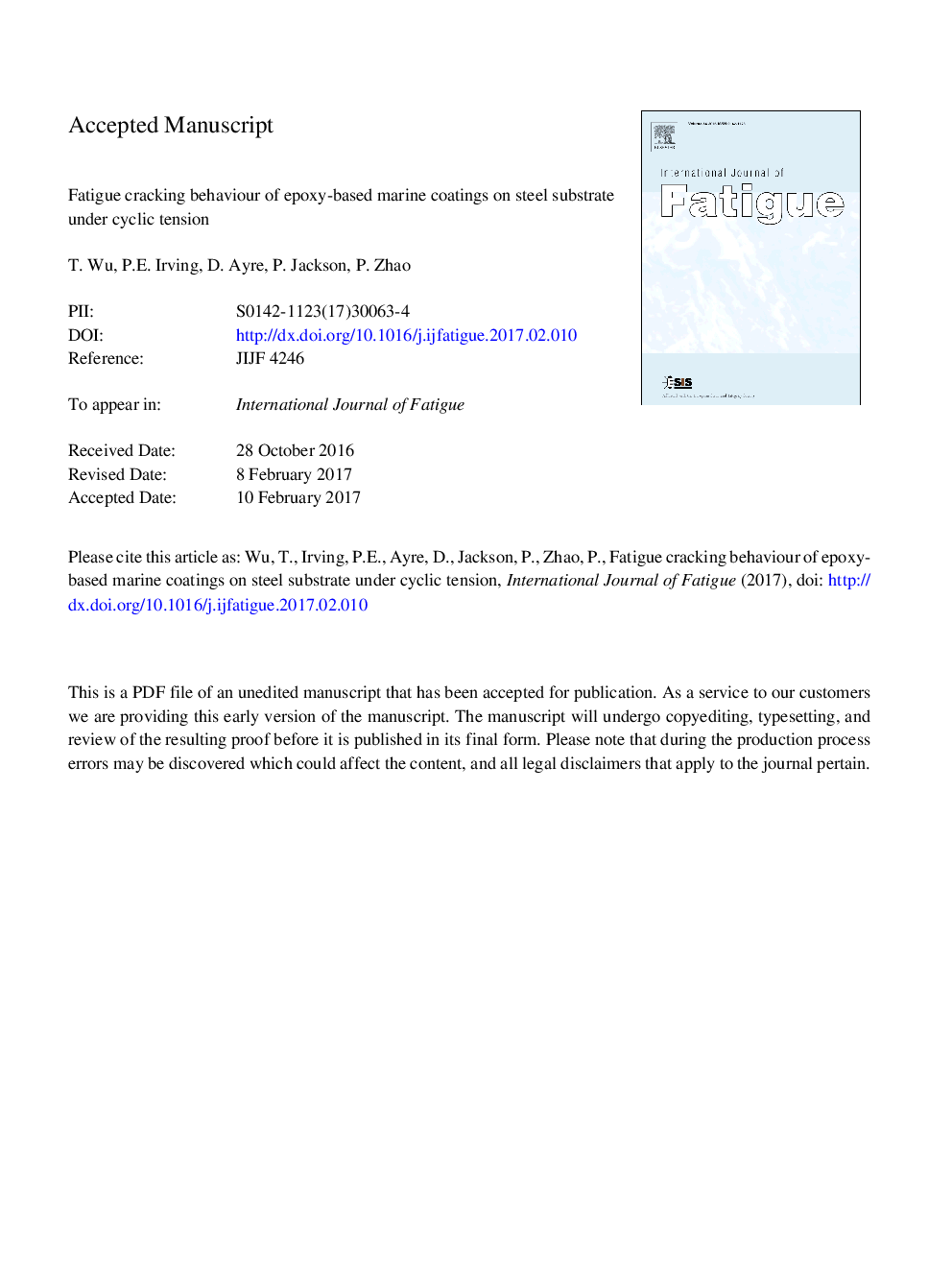| Article ID | Journal | Published Year | Pages | File Type |
|---|---|---|---|---|
| 5015272 | International Journal of Fatigue | 2017 | 33 Pages |
Abstract
Strain controlled fatigue tests have been performed on two types of heavily filled epoxy corrosion protection coating sprayed onto a 6Â mm steel substrate. Fatigue cycling was performed at R ratios of 0 and â1. The two coatings differed in their formulation and the major differences in mechanical performance were in their static strain to first crack development and their fracture toughness, where Coating A was significantly tougher than coating B. During strain cycling coating crack development was monitored using optical observations and surface replicas. It was found that in both coatings surface crack development began soon after the onset of cycling and proceeded via growth of surface channelling cracks and multiple initiation of new cracks. Detailed studies were made of crack development morphology and its relation to coating type and to the applied strain range. A definition of coating life as the first appearance of a 2Â mm surface crack length was used. This represented the end of the life where the coating protected the substrate. Before this life was achieved, crack growth rates of single cracks were invariant with crack length. After this point further crack growth, multiple cracking and crack to crack interactions took place. Cracking in this region could be characterised with a new total crack length parameter shown to be strongly dependent on applied strain range.
Related Topics
Physical Sciences and Engineering
Engineering
Mechanical Engineering
Authors
T. Wu, P.E. Irving, D. Ayre, P. Jackson, F. Zhao,
